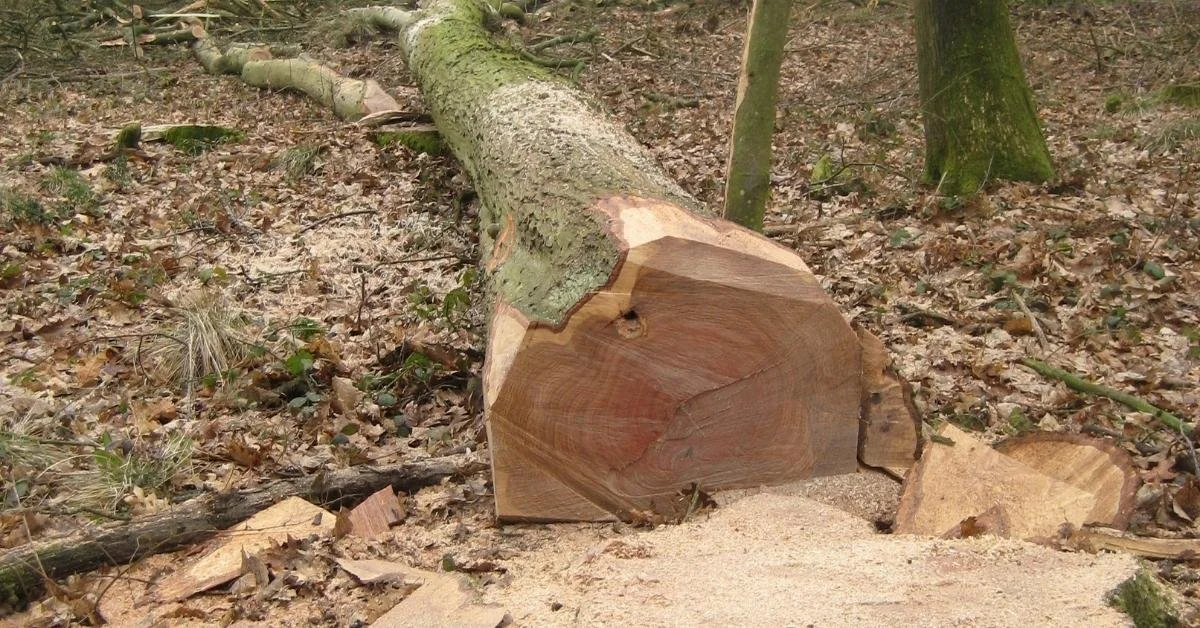Sustainable Timber: Do We Understand It?
What Is Timber Sustainability?
One of the Oxford English dictionary definitions of “sustainable" is something that is able to be maintained at a certain rate or level; however, what does that mean in the timber industry?
As a renewable and natural resource, timber is a sustainable product, we all know that. It can grow again given robust and sustainable forestry practices. However, take European Oak - Quercus Robur, a staple in the construction and furniture industry in North-Western Europe. It is sustainable, but only in certain sizes and lengths. Oak, as we all know, has a very long life cycle. Saplings planted in 2016 will probably not be ready for a harvest of a good size until 2116! So it's sustainable, yes, but only over a long period. Wide diameter and long logs may not be available indefinitely.
In my view, sustainable timber refers to all the possible timber we can use once it is cut down. Those of us in the timber industry, from forester to carpenter and every process in between, should all be making the absolute most of the timber that we are using. This is because, despite all possible efforts made, the nature of timber work is to cut wood to size until it is fit for application. The loss of volume can be enormous. So, by its very nature, the timber industry is fated to be wasteful, thus unnecessary waste is abhorrent to all timber merchants of modern times.
What Does Sustainable Timber Mean?
I see the words “sustainable” or “sustainable supply” on nearly all timber-related websites, be they suppliers or customers. But do we use the word without thinking about what it means? If customers and suppliers alike were truly concerned with the sustainability of the timber they trade, why do we still see timber returned for the smallest of knots or character? Matters of consumerism and instant gratification aside, this calls into question today's level of skill in carpentry, joinery and cabinet-making. Our forbear craftsmen, many of whom are now in their nineties or no longer with us, would have been able to look at the piece of timber, turn it around in their hands a few times and then know exactly how to use that piece of timber on their project with whatever knot or character it contained. We have some fantastic modern wood fillers now, some of which you mix with wood dust of the same species, becoming almost undetectable in knot holes once sanded. Alone, this is a great solution to ensure we can use all of the timber we cut down.
Wood Cut to Size and Shape: Why Timber Selection Matters
The process of working with wood involves cutting it down, planing and sanding it down. When we take a customer order, we select from either a square-edged board or waney edged board to cut and machine the order. This selection is made in good faith, knowing through experience that trees have branches and that we buy as good a timber grade as the market can supply. We ensure that we get the very best recovery rates possible to minimise wastage at every stage. Yet, having cut the job in good faith, we occasionally have timber returned that, in our opinion, is perfectly usable, given higher skills in the industry, all because it features a knot or a small split (these features are erroneously referred to as “defects” in the industry, which does not help the matter. Knots, splits and whorls are what give timber character).
The trouble is, the biological impossibility of consistently clear timber aside, what are we meant to do with rejected timber once it is cut? In these situations, plans to minimise wastage have gone out of the window, along with any profit margin and aspirations towards sustainability.Its important that you discuss your project with us. Many's the time that we have sourced, for example, a 4 metre board, because that is what we have been asked for, only to find the customer has cut them in half! For us to find the longer and wider boards takes effort and often they are a higher price. So if what you need is shorter boards - please, tell us. It may be the case that the quote would be cheaper as well as more environmentally sound.
We must, must, must, as an industry, take a more responsible look at how we use each and every piece of wood we cut. We need to educate our customers that trees have branches and all kinds of other beautiful features in it. We must encourage them to accept that clear timber is not the be-all and end-all, that timber is natural and that every piece is unique.
Then, and only then, may we be able to truly claim our industry meets ‘sustainable’ practices!
Dave West
WL West Timber is a family-owned sawmill & timber merchant in West Sussex with over 155 years’ industry experience. We provide a wide range of air-dried oak and kiln-dried oak timber products and supplies. We also build and install custom projects for our customers.
For more news, tips and updates, follow us on Facebook, Twitter, or Instagram.
For entirely finished products, timber supplies or woodworking tools, have a look at our online shop.




